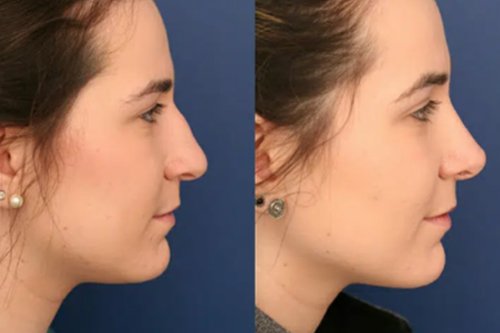Brain and ENT Clinic – Dr Lalit Mahajan In Nagpur & Dr Rachna Gangwani Mahajan In Nagpur
Rhinoplasty

Are you considering a transformation with rhinoplasty? Unlock the key to your ideal nose shape and boost your confidence with our expert rhinoplasty services.
Rhinoplasty is a surgical procedure commonly known as a “nose job.” It is a cosmetic surgery that involves reshaping or reconstructing the nose to enhance its appearance or improve its function.
Rhinoplasty, commonly known as a “nose job,” is a surgical procedure designed to reshape and enhance the appearance of the nose. Whether you’re seeking cosmetic refinement or looking to address functional concerns, our skilled surgeons are here to guide you through the process.
Why Choose Rhinoplasty?
Cosmetic Enhancement: Achieve the nose you’ve always dreamed of. Whether it’s reducing a hump, refining the nasal tip, or correcting asymmetry, our surgeons specialize in creating harmonious and natural-looking results.
Functional Improvement: Breathe easier with functional rhinoplasty. Our procedures can address structural issues, such as a deviated septum, to improve airflow and alleviate breathing difficulties.
Symptoms of Rhinoplasty
Swelling:
- Swelling is a normal part of the healing process and is most pronounced in the first few days after surgery.
- Swelling may gradually subside over the following weeks and months, but complete resolution can take several months.
Bruising:
- Bruising around the eyes and nose is common, especially if the surgical approach involves an external incision (open rhinoplasty).
- Bruising typically reaches its peak within the first few days after surgery and gradually fades.
Nasal Congestion:
- Nasal congestion or stuffiness is common due to swelling of the nasal tissues.
- Breathing through the nose may be temporarily impaired, particularly if the surgery involved procedures to improve nasal airflow.
Pain and Discomfort:
- Mild to moderate pain or discomfort is normal in the days following surgery.
- Pain is usually managed with prescribed or over-the-counter pain medications.
Nasal Drip:
- Patients may experience a clear or bloody nasal drip in the initial days after surgery.
- Keeping the head elevated can help minimize nasal drainage.
Treatment of Rhinoplasty
Initial Consultation:
- Schedule a consultation with a board-certified plastic surgeon or an ear, nose, and throat (ENT) surgeon specializing in facial plastic surgery.
- Discuss your goals, concerns, and expectations for the procedure.
- The surgeon will evaluate your nasal anatomy, overall health, and medical history to determine if you are a suitable candidate for rhinoplasty.
Preoperative Assessment:
- If deemed a good candidate, you may undergo preoperative assessments, which may include blood tests, imaging studies (such as X-rays or CT scans), and a discussion of your medical history.
Treatment Planning:
- Collaborate with the surgeon to develop a personalized treatment plan based on your specific goals and anatomy.
- Discuss the surgical techniques that may be used, such as open or closed rhinoplasty, and the expected outcomes.
Surgical Procedure:
- On the day of the surgery, you will receive anesthesia to ensure comfort during the procedure.
- The surgeon will perform the planned surgical techniques, which may involve adjustments to bone, cartilage, or soft tissues to achieve the desired aesthetic and functional results.
Recovery Period:
- After the surgery, you will be monitored in a recovery area until the effects of anesthesia wear off.
- Swelling, bruising, and discomfort are common during the initial recovery period.
- Follow the surgeon’s postoperative care instructions, which may include taking prescribed medications, avoiding certain activities, and keeping the head elevated.
